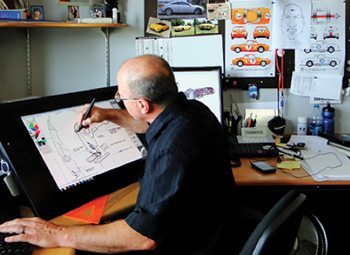As a society, we are flourishing. Every industrial revolution yields more economic prosperity than the last. The consumer class is growing, developing countries are getting richer, and the average lifespan continues to rise. Humans are less concerned about survival and more focused on pleasure.
The experience economy
Joseph Pine writes in the Harvard Business Review that “experiences have emerged as the next step in what we call the progression of economic value. From now on, leading edge companies – whether they sell to consumers or businesses – will find that the next competitive battleground lies in staging experiences.” This means that services are now also becoming commodities, thus competing on price and sacrificing margins in the process. To remain competitive, it’s even more important than ever to design products or services to fit the customer’s specific needs. This involves connecting with your customers on an emotional level by providing the best experience possible – or, at least, better than your competitors. Hire the best designer with this list of product design interview questions.
 User experience in product design
User experience in product design
Experiences don’t have to come from Disney World or Hollywood. Most products still provide the user with an experience, whether it be good or bad. Intuitive products generally delight us because they give us one less thing to think about in our chaotic lives. Our lives are flooded with new widgets every day, each of them requiring their own unique learning curve. Picking up a remote that doesn’t turn on the TV when you click the “on” button doesn’t feel good, especially after a long day of dealing with products and people around the office that don’t do their jobs either. It’s not your fault for not understanding the TV remote, it’s the TV remote designer’s fault for not understanding you. George Konstantakis, president of Wisconsin’s iconic design firm Brooks Stevens, says companies like Google and Apple are able to disrupt competition because they “find the right balance between desirability, viability and feasibility.”
To design products that provide great experiences, it’s essential to understand the user as much as possible. It’s not enough to place the buttons on the TV remote all within reach of an average male’s thumb; designers must also consider what’s in his head at the time of product use. Is he watching TV while he eats dinner with his right hand? Does he have a second TV with different controls that he also has to learn? Does he even use this remote for anything other than power and volume?

Digital experiences
There appears to be one distinct group of products that owns a disproportionate amount of bad user experience complaints: computer applications. There’s an inherent gap between how computers work and what humans would naturally expect. Electrical products are difficult to understand by their very nature of being invisible, creating a steep learning curve for all of us visual learners. What’s even more intimidating is the fact that someone can do irreversible damage to a computer by clicking the wrong button.
Despite the steep learning curve, computers and other digital applications are here to stay and are exponentially rising in number. It’s the job of the designer to figure out how to make digital applications user-friendly. Digital applications need to provide the user with a good experience: one that’s fun and easy to learn.
Common mistakes
A common problem found in product development of digital applications is that engineers and programmers are commonly tasked with designing the interface. After all, they’re the ones coding the interface, right? Wrong. Engineers generally aren’t good designers; they’re not supposed to be. They’re so tech savvy and so ingrained in the product that they don’t have the mental capacity to consider how non-tech savvy users might interact with their product.
Other digital products fail by having too many features. This is especially true with mass-market products. The various user groups all have different needs, yet the designer was tasked with creating a one-size-fits-all application. The number of different user groups is typically proportional to the number of features needed. Additionally, the number of different features is typically proportional to the complexity and learning curve of the product. One-size-fits-all approaches end up fitting nobody.
One last common pitfall is choosing aesthetics over usability. Graphic designers are also often tasked with designing user interfaces for digital products; their job is typically to make the product look nice on the shelves and in magazines. Just like any other job, experience matters. The job market is booming with newly created positions for UI/UX (user interface/user experience) designers. These designers are often re-tooled graphic designers who focus on the overall experience of the digital product. Kate Pociask, local independent UI/UX consultant, says that for those “looking to learn more and learn quickly about UI and UX design, I think the fastest way is to read design standards. For example, Google came out with Material Design in June 2014, and you can see in the visual and verbal language that they’re emulating paper. Literal paper.”
 Moving forward
Moving forward
As our world increasingly moves online, it’s essential that companies consider the experience of their customers on the other end of the screen. People will continue gravitating toward products and services that better serve their specific needs and provide memorable experiences. As social creatures, we will always appreciate people and products that connect with us on an emotional level. The digital age will continue transforming the way we can live, work and socialize; forward-thinking companies will learn to capitalize on this new currency to continue driving profits.

